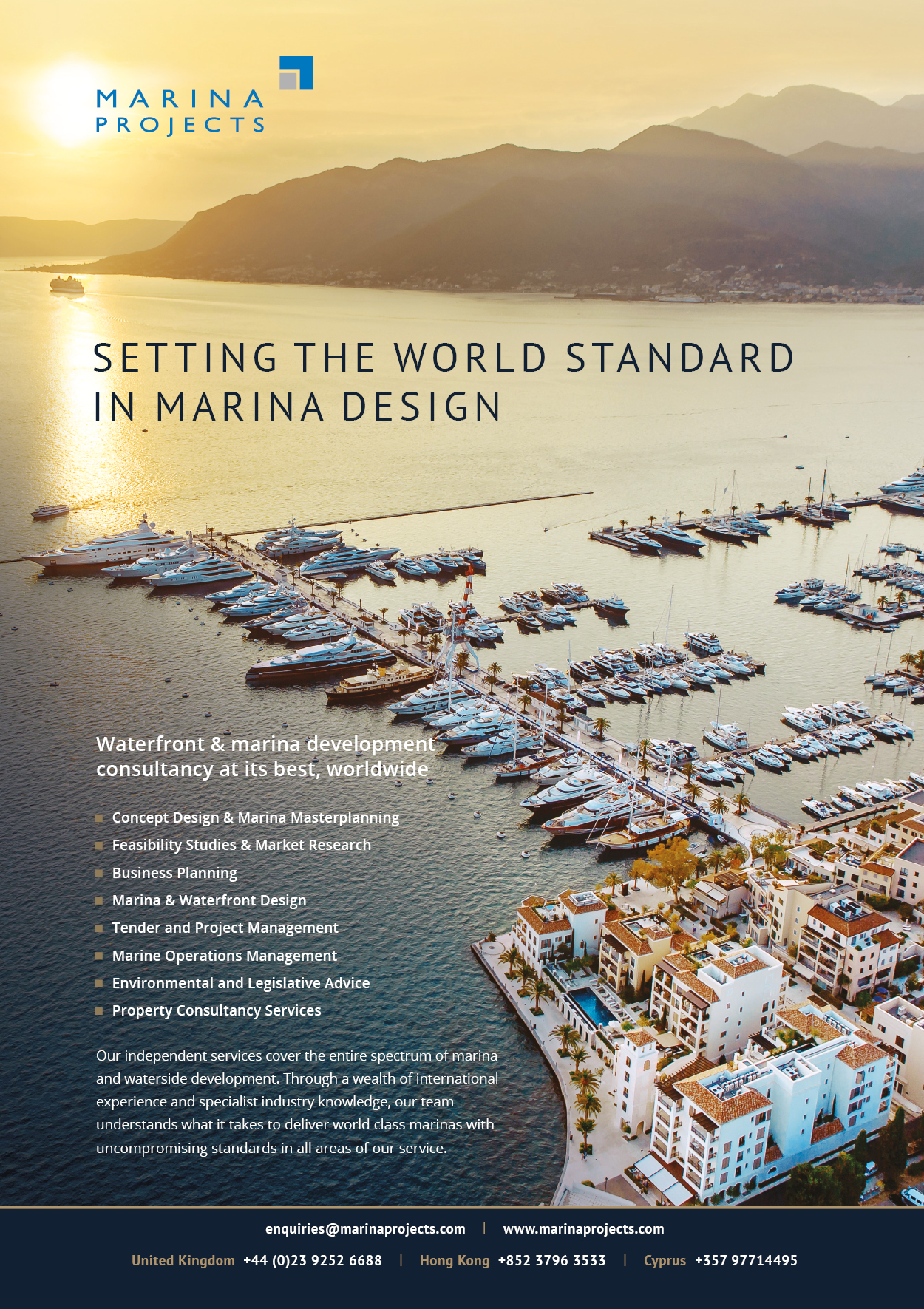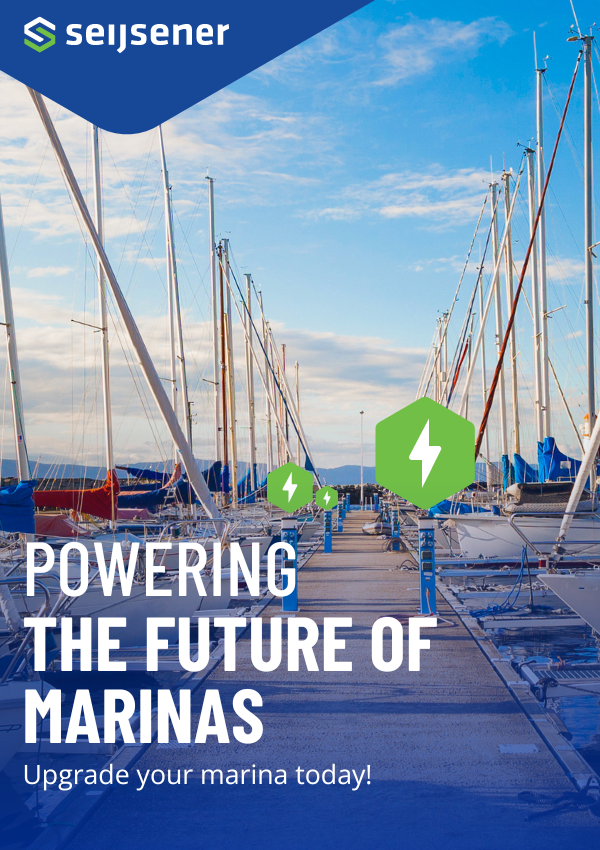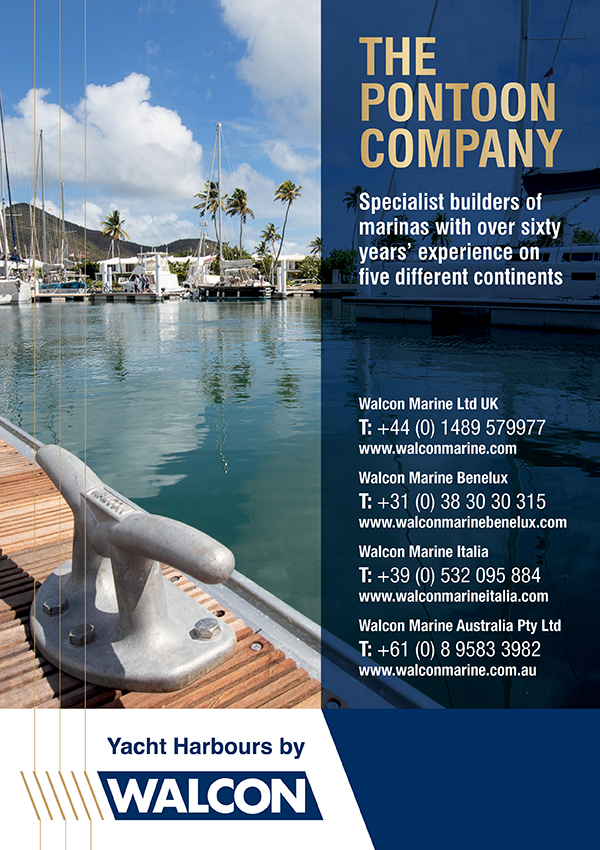Adelaide Pointe: a new development model
by Greg Weykamp
For most developers in the United States, the path to success when building on the waterfront has been focused on securing a prime parcel and immediately setting about creating an exclusive, fenced off private enclave behind gates and guardhouses.
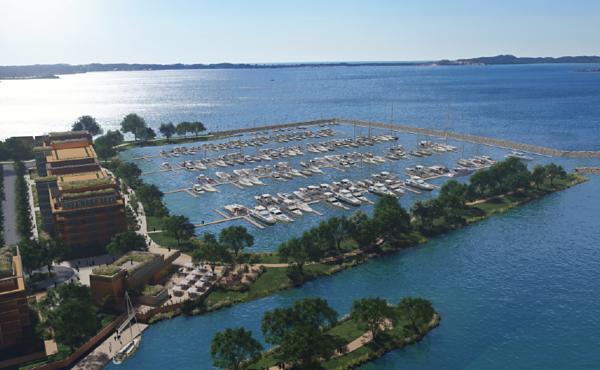
Aerial CGI highlights the scope of a site that was once a fenced off marine facility.
The City of Muskegon was once a very wealthy community of lumber barons providing much of the timber used to rebuild Chicago after the great fire. Located along the sandy beaches of Lake Michigan, Muskegon Lake is a large inland water body that is still home to commercial shipping, along with interstate ferry services and world class recreational boating. After the lumber mills came paper mills and steel foundries, and a local economy based largely on industry while the rest of the West Michigan shoreline communities shifted to tourism and recreation.
Sustainable community
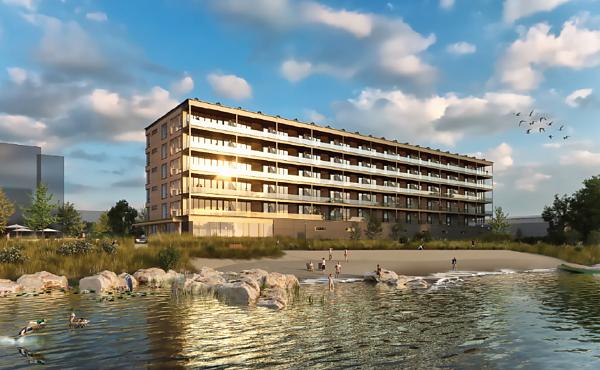
Mass timber multi-family and mixed use buildings along the lakefront have been designed and constructed with sustainability in mind. Image: Korb & Associates (architects).
While permitting a project of this scale would have been relatively easy decades ago, today there is a much greater focus on protecting public trust waters that requires much greater care and creativity in order to complete the entitlement process. With a passion for the environment and a deep love of Muskegon Lake, the Leestmas decided to build the most sustainable waterfront community they could imagine, and share it with as many people as possible.
Open waterfront
Rather than putting up gates, they began the project by taking down fences and inviting the nearby Nims neighbourhood residents to enjoy the waterfront. In partnership with the City of Muskegon, this new waterfront community will make every inch of the waterfront open to the public forever under permanent dedicated public use easements, resulting in 1 mile (1.6km) of new public trails and over 2.5 acres (1ha) of new public waterfront park space.
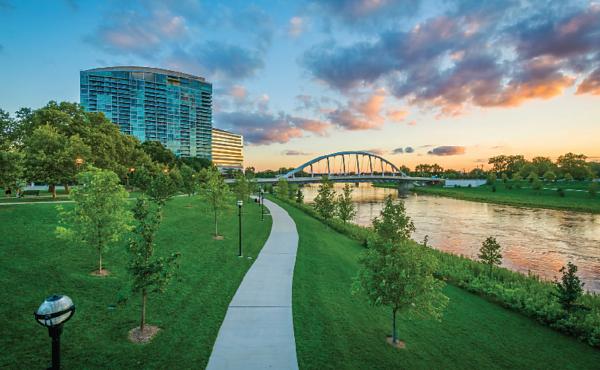
Soft shorelines have been adopted for over 82% of the project.
Soft shorelines
While traditional shoreline treatments for lake environments with 3.4ft (1m) wave heights rely heavily on armouring, the Adelaide Pointe project has committed to utilising soft shorelines wherever possible. As a result, over 82% of the shoreline will be a native wetland restoration very carefully designed by fisheries and wetlands biologists. Creation of the marina basin will require dredging of over 2,300,000 ft³ (65,000m³) of foundry sands and 353,000ft³ (10,000m³) of contaminated organic sediments.
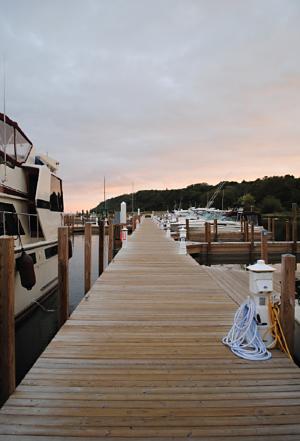
A floating timber dock system, manufactured locally, reflects the preference for natural materials.
Natural materials
Moving inland, the development proposes a series of six storey, high density multi-family and mixed use structures organised in a walkable neighbourhood connected to the nearby downtown and Lake Michigan beaches by a regional trail network. Surface parking is intentionally limited, with the majority of parking below structure, creating a waterfront district where residents and visitors leave their cars behind as soon as possible.
All of the buildings will be constructed using mass timber, a method that relies entirely on laminated wood structural panels, posts and beams for all components. This makes every structure far less carbon intensive, with significantly reduced steel and concrete than typical buildings. The lighter weight of the buildings requires much lighter foundations, resulting in significant savings, faster construction, and a more sustainable structure that harks back to the historic lumber mill uses on the site. Continuing the use of native plant materials throughout, each building will incorporate intensive green roof systems focused on habitat creation for pollinators and migratory bird species.
Green energy
As the Leestmas also own a commercial solar business, Adelaide Pointe will incorporate extensive use of solar energy generation throughout the project. All new and existing structures will incorporate rooftop solar, and the 10ft (3m) wide waterfront trail system will have solar panels in the pavement. The marina will be constructed using a locally manufactured floating timber dock system with solar panels mounted to the walking surface of the main piers, offsetting a significant percentage of the marina’s electrical use.
As early adopters of electric vehicles, it made sense to the developers to install over 20 Level 2 Destination EV chargers, a Level 3 DC fast charger, and EV charging capacity at each residential parking space in the development. Looking towards the future of electric boating, the marina will offer high speed chargers for electric boats on the water today, and design the marina electrical system to allow for in-slip charging in the future.
Widespread support
As you might imagine, this very unconventional approach to sustainable and accessible waterfront development has garnered broad community support, including unanimous city planning approvals and the support of local environmental organisations such as the Muskegon Lake Watershed Partnership. Customers have also responded positively, with the first 50-unit residential building securing enough buyers to commence construction in only a few months, the first commercial/retail structure fully leased, and roughly 20% of the marina berths leased even before construction has begun. The idea of living and working in an environmentally sound yet vibrantly active and connected waterfront is clearly attractive to many buyers.
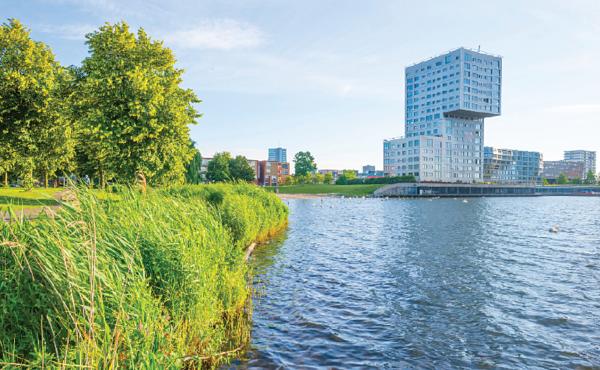
Fisheries and wetlands biologists very carefully undertook a native wetland restoration project.
Gregory Weykamp is president of Edgewater Resources, LLC, specialists in delivering real-world solutions for complex coastal and waterfront projects. Edgewater acted as consultant for the Adelaide Pointe project.
www.edgewaterresources.com

